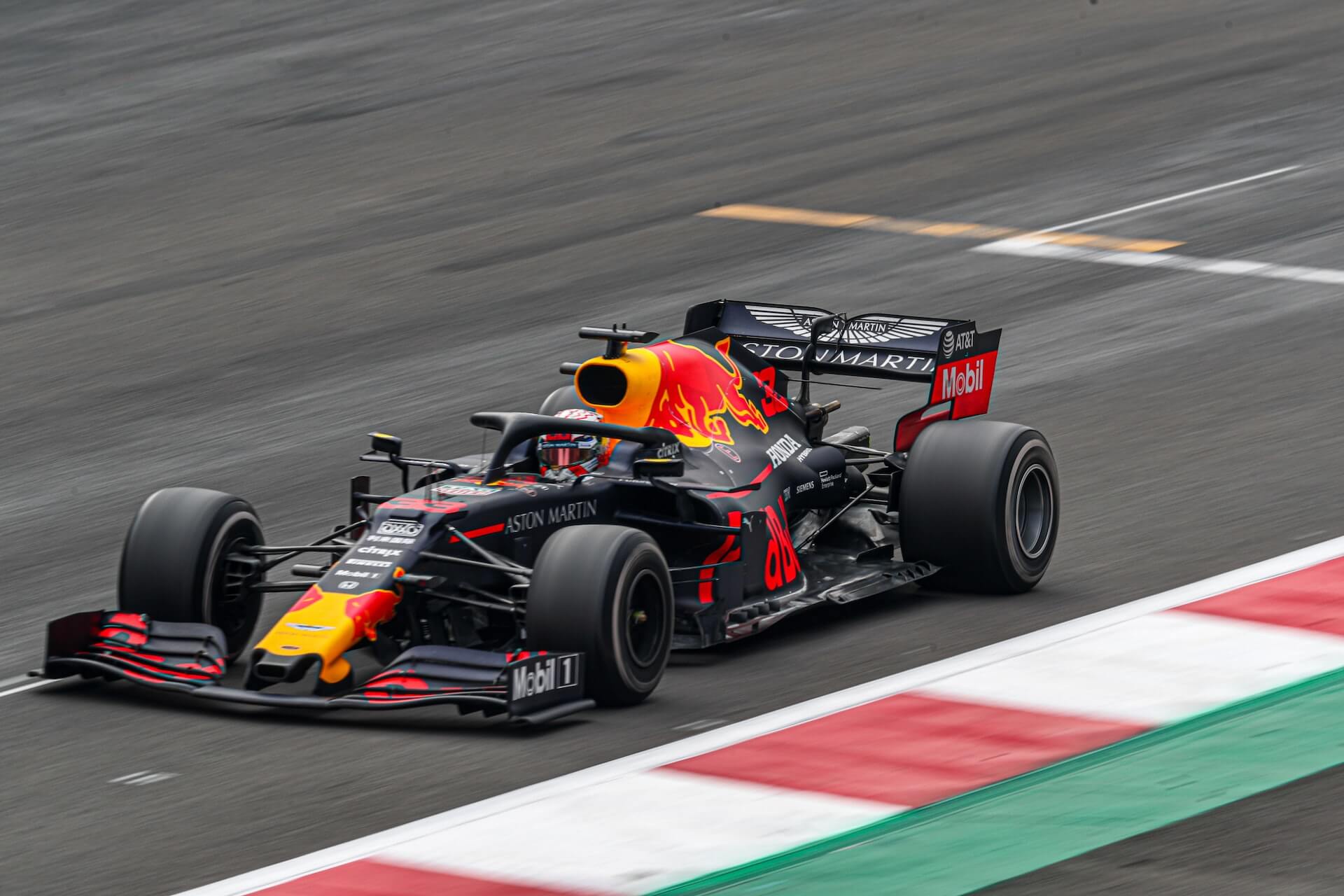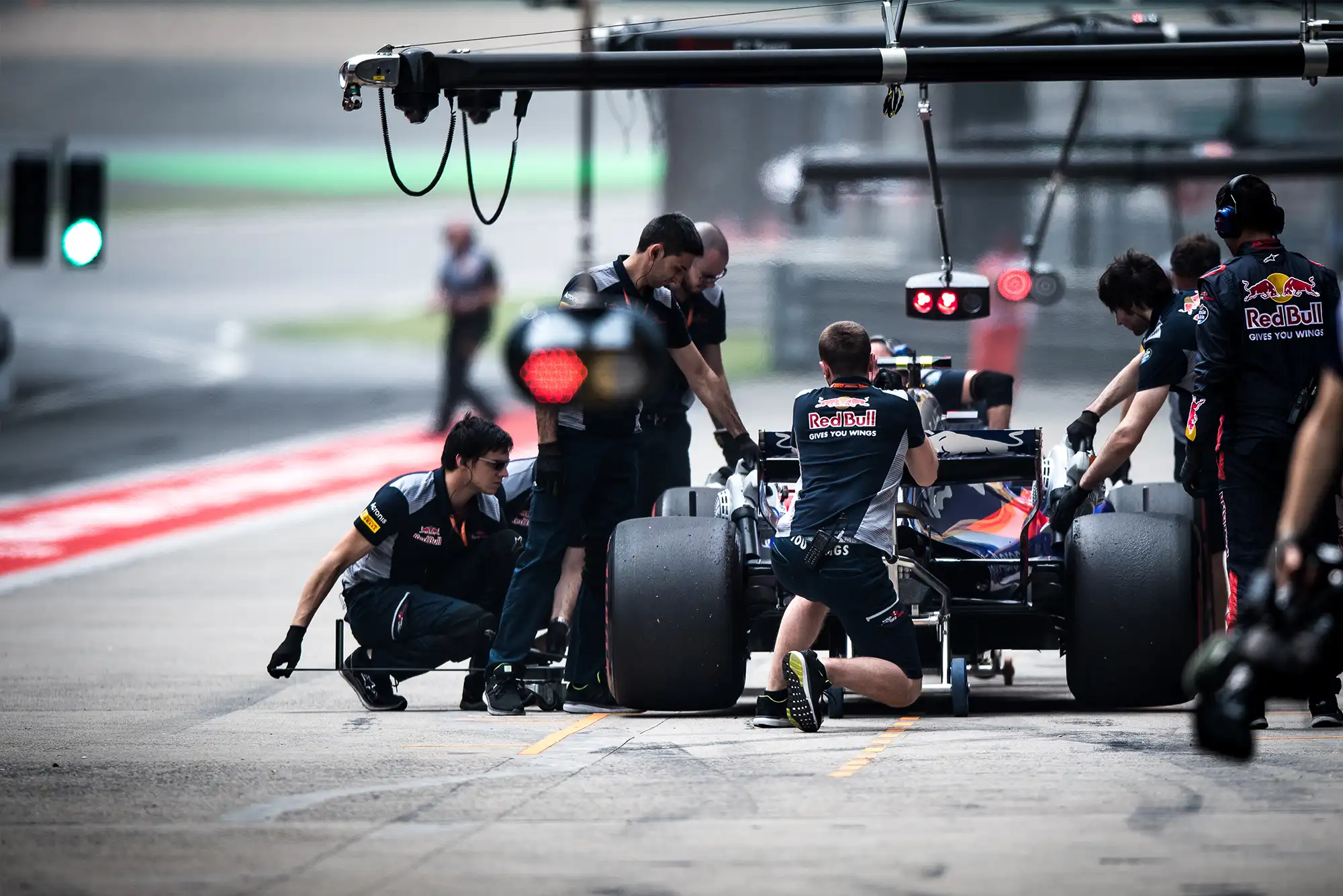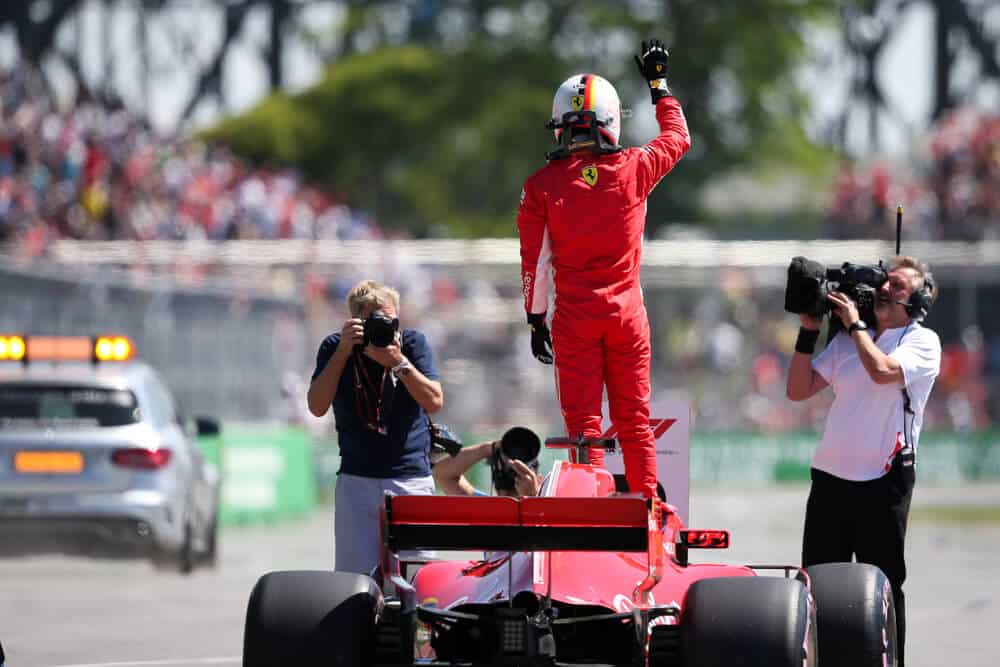Just like citizens require a driver’s license to be able to drive their cars and vehicles on the road, an F1 driver also requires a special kind of license to be able to drive an F1 car. There are a lot of things that a driver will require so that he can participate in a Formula One race. However, when it comes to logistics, an f1 driver’s license is the only requirement.
In order to differentiate an f1 license from a regular driver’s license, it is named an f1 Super License. Attaining it isn’t as easy as having a regular driver’s license, as the driver would have to meet certain requirements set up by the FIA.
In this article, we will be discussing everything about Formula One’s Super License, what it is, what its requirements are, and much more..
Table of Contents
Watch this video to learn how you get a F1 super license.
What is an F1 Super License?
Formula One’s Super License is a type of driver’s license that makes you eligible to drive an F1 car and take part in f1 competitions. Getting a Super License is not easy as there are a lot of complexities that the driver has to face to attain that license.
Key takeaways
- Much like a driving license is needed for driving a regular car, the FIA issues a Super License to eligible drivers to drive and participate in Formula One racing championships.
- The license is given only to those drivers that have completed all the rules set by the FIA.
- The driver must be eighteen years of age before applying for a Super License,
- The driver should have a valid International Grade A competition license with a driving license in their homeland.
- The driving license must be free of any suspensions or revokes.
- The driver must pass a mandatory written theory test made by the FIA based on the rules and regulations of Formula One racing.
- The driver must have completed at least eighty percent of two single-seater motor championships as stated in the regulations section by the FIA.
- The driver must have a minimum of forty points scored within the span of three years.
- One of the major adjustments in the rules set by the FIA for getting a Super License was made in 2016 after the Max Verstappen incident.
- The Super License can cost up to $10,000 to $20,000.
- An additional fee is also charged based on every point scored by the driver.
- Drivers earn Super License points so that the FIA is better able to judge the qualifications and expertise of the Formula One race driver.

Understanding F1 Super License
F1 Super License was first introduced in 1990 by the FIA, for drivers who were competent enough to drive a single-seat auto race car. The Super License was used as a certification for these drivers. The FIA has set many requirements and a theoretical test for the drivers wanting to achieve the Super License.
This system ensures that only the competent and best drivers participate in Formula One race competitions. With changes in time and over the course of many years, the requirements to attain the Super License have been changed by the FIA a number of times.
The Change in the requirements for F1 Super License
Before 2015, FIA had not set any rules for the attainment of points before the Super License could be handed to the drivers. The license was handed out based on the driver’s achievements and ability to drive a single-seat race car. Max Verstappen changed that when he made his debut in the Australian Grand Prix in 2015.
Max Verstappen made his debut in the Formula One Australian Grand Prix in 2015 at the age of 17. He had no driver’s license, even though he was allowed to participate in the event. This made the FIA ponder over the fact that someone as young and inexperienced as Max was driving in the F1 race competitions. It was after this that the FIA imposed the rule of being at least 18 years of age to be eligible for the Super License.
Unless the rules set by the FIA change, Max Verstappen will remain the youngest driver ever to participate in a Formula One race at the age of just 17 years and 166 days.
How much does the Super License cost and why is it so expensive?
Nothing in this world is free, and neither is the Super License. The Super License can vary depending on the number of championship points the driver has scored. Reportedly, the Super License costs $12,800 with an additional renewal charge every year. Plus, the driver also has to pay an extra $1280 for every world championship point that they score.
According to some reports, the cost of an F1 Super License can cost from $10000 to $20000, with an additional fee depending on the number of points the driver had scored in the previous year. Plus, the drivers are subjected to an additional renewal fee every year.
To add on, more charges are pressed for every point the driver earns. This means that the more successful an F1 driver is, the more he has to pay in order to retain his Formula One Super License. For example, Jenson Button, who won the 2009 world championship, had to pay a whopping price of $30,000 to $1.28 million to renew his Super License.
The sky-high prices of the F1 Super License have attracted many controversies throughout the year. For example, the cost of the Super License increased from €1690 to an additional €447 for every championship point in 2001 to €10,000 and €2100s for every championship point in 2008. This large increase in the cost attracted many controversies and criticisms from the viewers and the drivers. The main point raised by the drivers was that no additional fee or renewal charges have to be paid for the driver’s license by a citizen for every extra mile he drives. Then why is this the case for Formula one drivers?
The FIA president, in response to these accusations made by the drivers and the viewers, said that there are a lot of different well-paying jobs that these drivers can do if they are not happy with the prices.
He argued that the large amounts are charged so that the circuits and tracks for Formula one racing can be maintained and kept in reasonable condition to ensure the safety of the drivers. Plus, the fees for the license seem a short amount to pay when compared to the amount the driver earns through Formula One racing.
How to apply for an F1 Super License?
If you meet all the requirements set by the FIA for eligibility for a Super License, here is a list of steps for you to follow to apply for the Super License.
- Click a photo of yourself in front of a clear, plain background. The photo should be taken recently so that it reflects your current appearance. The photo should be taken without glasses, wearing plain clothing, and with a neutral expression. This photo will be submitted with your application in passport-size composition.
- Write a biography or a resume listing all the information about the racing competitions that you have taken part in. For example, list the number of years you have been taking part in racing competitions, the names of those competitions, and so on.
- Do a medical test based on the medical requirements set by the ICSCC. Make sure that the test should be done within three months of you submitting the application for the Super License.
- Fill in the online application form on the FIA licensing website. First, fill in your personal information and then select ‘no’ for the question asking about your previous Super Licenses.
- In the second section of the online application form select the option of ‘competition license only’ and click ‘yes’ for the additional fee charged by the ICA.
- If you are applying to drive the below GT3 race car, select option C in the online form.
- Upload your passport-size composition photo and your medical form. Read through all the other information and sign the document.
- Pay the application fee, after which you will receive a confirmation document explaining the details of your payment, your application process, and how you can track it.
- Choose the option through which you want your license to be shipped or mailed. Depending on the option that you choose, your license will arrive within two to four weeks.
According to some reports, the cost of an F1 Super License can cost from $10000 to $20000.
What are the FIA requirements for an F1 Super License?
F1 Super License isn’t that easy to get! Apart from proving your abilities as a driver, you also need to pass certain qualifications in order to be eligible for a Super License. Down below, we have discussed the clauses that need to be fulfilled by the driver. The clauses discussed below are all according to the rules set by the FIA in 2016.
The driver is at least 18 years old.
One of the first and foremost rules that a driver wanting to compete in an F1 race needs to follow is that he should be at least eighteen years of age. Any driver below the age of eighteen cannot get a Super License, no matter how skillful they are at racing.
This rule is pretty recent as it came into effect in 2016. It is also known as the Max Verstappen rule as this rule was implemented after Max Verstappen participated in F1 races at the tender age of 17.
This raised many heads toward Formula one racing that the committee is promoting the participation of young drivers, who do not even have proper racing experience in comparison with other drivers. This was the reason why the FIA had to make some changes and ensure the implementation of this rule.
They hold an International Grade A competition license.
Before getting a Super License, drivers need to get an International Grade A competition license. This license has its own cost and requirements that the driver has to meet in order to get this license. This license is mostly issued after the drivers work their way up in racing competitions, starting from lower-level institutional or national championships. This is quite a slow process as drivers can take up to a few years to get the International Grade A competition license.
They must have a valid driving license from their home country.
Having a valid driving license in their home country is very important for the drivers because if they can’t even drive a regular car, how can someone expect them to race a Formula One car? The driver also has to ensure that their driving license is absolutely clean from any suspension or revoking that could prevent them from driving on public roads. If in case the driver’s license had been suspended or revoked at any point in time, they won’t be eligible to get a Super License.
The driver must pass an FIA theory test.
Drivers who want to get a Super License first need to pass a written theory test. The test is based on the rules and regulations of Formula One racing. The test is taken to ensure that the drivers are well aware of all the rules and regulations set by the FIA for the racing of Formula One, as this racing differs from other kinds of racing.
The driver must have completed at least 80% of each of two full single-seater championships.
This rule stresses the fact that all drivers wanting a Super License must have completed at least eighty percent of other single-seat motor championships. Single-seat motor championships usually refer to F2, as it is usually the last step before the driver qualifies himself for Formula One championships.
However, F3 and other single-seat championships can also be participated in by the drivers to qualify themselves for the Super License.
They must have accumulated at least 40 Super License points in the previous three seasons.
Apart from completing eighty percent of any single-seater motor championships, the drivers must also possess a minimum of forty points in order to be eligible for the Super License. These forty points must be accumulated within a span of three seasons that have been held the most recently.
During the covid-19 era in 2020, FIA made slight changes to this rule as the effects of covid-19 were also affecting the motorsport championships. FIA reduced the number of points from forty to thirty, which could be accumulated within four years instead of three.
However, these changes in the rule can only be applied to drivers who the FIA reckons would have accumulated all forty points if covid hadn’t canceled their seasons. Plus, the change from three years to four years is only for those drivers that have the 2020 season in consideration when they file a request for a Super License..
How do F1 Super License points work?
Formula One drivers are awarded points based on different criteria which helps the FIA to assess the driver’s experience and qualifications for the Formula One racing competitions. Each driver will need a minimum of forty points for him to be eligible for attaining the Super License. For example, a driver is awarded one point if he drives at least 100 kilometers in a free practice session. A maximum of 10 points can be earned during the Free Practice session.
A driver also earns two points if he completes a championship with a penalty point system without actually getting any penalty points. A total of five points are awarded to the driver if he wins a certain Grand Prix event.
One of the most popular routes taken by the f1 drivers to gain Super License points is to start participating in karting competitions from a very young age. Some drivers who win lower Formula series like the F2 and F3 can have a chance to seal their Super License.
Formula 2 and the IndyCar series are the most popular routes selected by the drivers to gain as many points as they can within three years of securing a Super License. The top three drivers of Formula 2 score enough points for them to automatically move to the F1 championships. In the IndyCar series, only the champion scores enough points for him to move into the F1 championships.
Drivers also receive penalty points against their Super License for any offenses they make that break the rules listed by the FIA in the regulations handbook. Penalty points are often received due to the time penalty incurred by the driver. For example, causing a collision or violating in the pit can all lead to a time penalty and hence, penalty points.
Penalty Points
Penalty points are awarded in the form of one, two, or three points based on the extent of the offense done by the driver or what the FIA suspects the intent of the driver was to cause that offense. Each driver has a limit of twelve penalty points within a span of twelve months.
If the driver exceeds this limit, a ban will be placed on him. This means that he will no longer be able to participate in the next Formula One championships that he was scheduled to take part in. However, until now, no driver has ever exceeded the penalty limit making them eligible for the ban.
Frequently asked questions about F1 Super License
What license do F1 drivers have?
Do F1 drivers have a driver's license?
How much does an F1 Super License cost?
How many points are needed to get a Super License?
When was the Super License first introduced?
How can a driver lose his Super License?
What is a Free Practice only Super License?
Conclusion
The Super License was introduced by the FIA to scrutinize and select the drivers that are well qualified to take part in Formula One championships. The FIA also set a series of rigorous rules and regulations so that the best of the best takes part in this popular, large fandom game.
Obtaining the Super License not only requires experience and talent but also requires a large amount of money. Charging such high amounts is deemed a very unfair rule set by the FIA, and this has often attracted a lot of criticism from F1 fans, viewers, and critics.
Learn more about Formula One
Want to learn more about F1? Then visit our Formula 1 glossary and dictionary.
Article sources
- https://www.rookieroad.com/formula-1/licenses-9966186/
- https://en.wikipedia.org/wiki/FIA_Super_Licence#:~:text=Drivers%20may%20also%20earn%20points,without%20receiving%20any%20penalty%20points.
- https://www.sporf.com/f1-super-licence-how-does-it-work-how-many-points-does-a-driver-need/
- https://f1.fandom.com/wiki/Penalty_Points
- https://bleacherreport.com/articles/2326851-positives-and-negatives-of-new-formula-1-super-licence-system
- https://jalopnik.com/formula-1-super-license-rules-fees-eligibility-f1-1849499800




